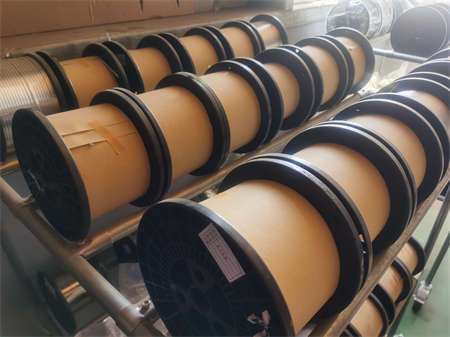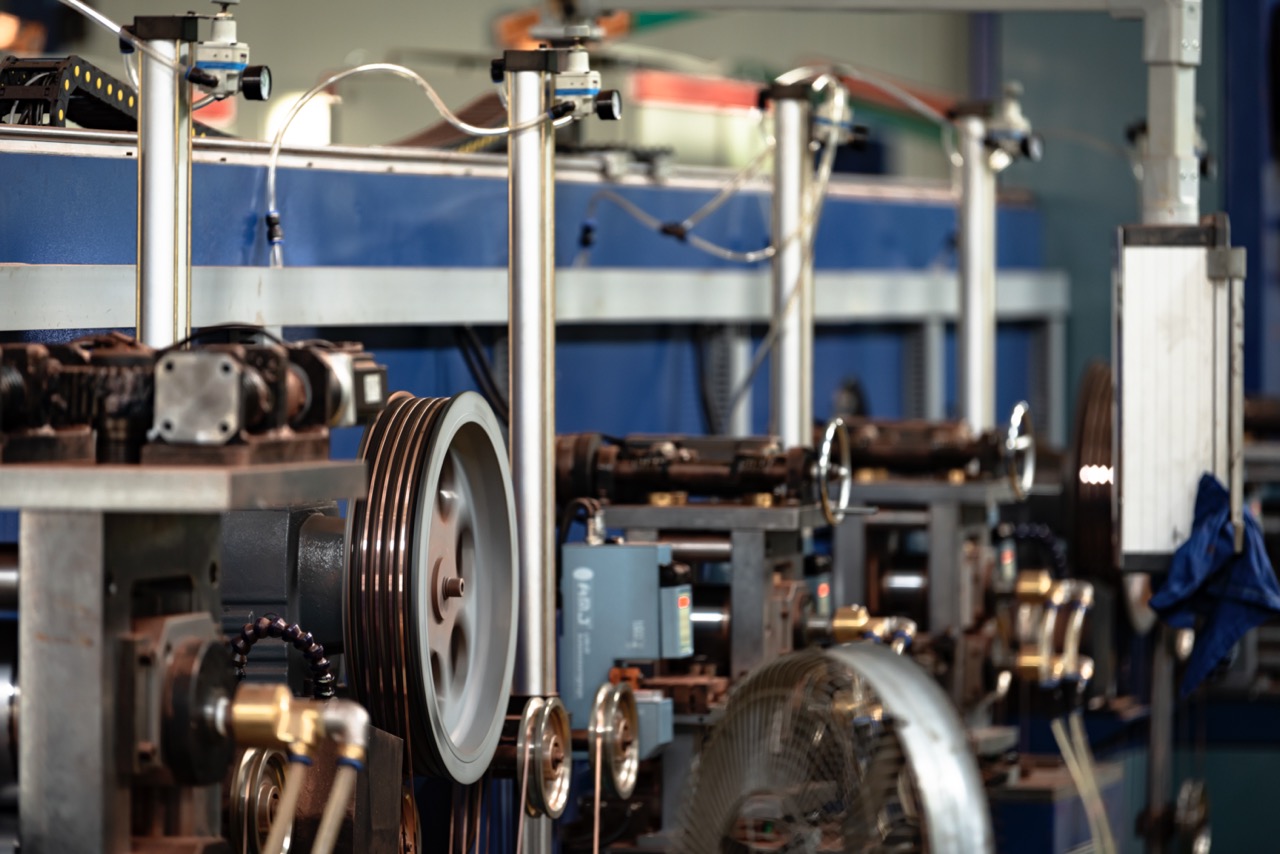The technical requirements for the copper-clad aluminum strip rolling process are relatively complex because it involves the different physical properties of two metals (copper and aluminum). In particular, the process parameters need to be precisely controlled in the drawing, rolling, annealing and other links to ensure that the copper layer and the aluminum core are well combined and the final product has ideal electrical and mechanical properties. The following are the technical requirements for the copper-clad aluminum strip rolling process:
1. Choose the right raw materials
Aluminum core material: High-purity aluminum or aluminum alloy is usually used as the aluminum core, and its electrical conductivity and mechanical properties are crucial to the quality of the product.
Copper tape material: The copper tape should be high-purity oxygen-free copper, and copper with a lower oxygen content is usually selected to avoid oxidation and ensure good conductivity.
2. Coating technical requirements
Quality of the coating: The copper layer of the copper-clad aluminum wire should form a strong metallurgical bond with the aluminum core to avoid gaps or delamination between the copper layer and the aluminum core. The thickness of the copper layer should be uniform and meet the design requirements. Generally, there are different copper layer volume ratios such as 10%, 15%, and 20%.
Metallurgical bonding: The copper and aluminum core must be metallurgically bonded, not simply mechanically bonded. To ensure the atomic bonding between the copper layer and the aluminum core, high temperature cladding or cold extrusion technology is usually required to achieve this.
3. Rolling process control
Rolling equipment selection: Use appropriate rolling equipment, usually a multi-pass cold rolling mill, which is required to have good temperature and speed control performance and be able to provide sufficient rolling pressure.
Temperature control during rolling: Control the temperature of the metal during rolling to avoid the separation of the copper layer and the aluminum core due to excessively high temperature. Generally, the rolling temperature of copper clad aluminum wire should be controlled between room temperature and about 300°C.
Rolling speed and pressure: The rolling speed should be controlled within an appropriate range to avoid excessive rolling speed that may cause the copper layer to crack or become uneven. The rolling pressure should also be moderate to avoid excessive deformation of the copper-clad aluminum wire.
4. Copper layer thickness and uniformity
Copper layer thickness control: The thickness of the copper layer is crucial to the conductivity of the copper clad aluminum wire, so the thickness and uniformity of the copper layer need to be strictly controlled during the rolling process. Generally speaking, the different copper layer volume ratios (such as 10%, 15%, 20%) will be determined according to the application requirements of the final product.
Uniformity requirements: The thickness of the copper layer should be uniform without fluctuations, otherwise it will lead to unstable electrical properties of the product. During the rolling process, the settings of the rolling equipment need to be precisely adjusted to ensure that the copper layer is evenly coated on the aluminum core.
5. Drawing process requirements
Drawing speed and drawing ratio: Drawing process is the key step in making copper clad aluminum wire into flat wire. The drawing speed should be controlled within an appropriate range to avoid cracking or breaking of the copper layer. At the same time, the drawing ratio (i.e. the stretching ratio of the aluminum core and the copper layer) needs to be reasonably designed to ensure that the copper layer will not separate from the aluminum core during the drawing process.
Annealing treatment: In order to eliminate the internal stress during the drawing process, annealing treatment is usually required. The annealing process should be controlled at an appropriate temperature (about 300°C to 400°C) to ensure the ductility and softness of the copper clad aluminum wire.

6. Annealing process control
Annealing temperature and time: Annealing is to improve the ductility of copper clad aluminum wire, remove internal stress, and ensure a tighter bond between the copper layer and the aluminum core. The annealing temperature is usually between 250°C and 400°C, and the annealing time needs to be adjusted according to the specifications and requirements of the wire.
Cooling after annealing: The cooling speed after annealing has an impact on the performance of copper clad aluminum wire. Too fast or too slow cooling should be avoided to ensure the stable combination of the copper layer and the aluminum core.
7. Wire surface quality requirements
Surface finish: The surface of the copper clad aluminum wire should be smooth and free of scratches, dents or cracks. Surface defects will affect the electrical performance and service life of the wire.
No exposed aluminum: During the coating process, the copper layer and the aluminum core must be tightly bonded to ensure that there is no exposed aluminum area. Exposed aluminum will lead to decreased conductivity and is susceptible to oxidation.
8. Electrical performance requirements
Conductive performance: The copper layer of copper clad aluminum wire is responsible for the conduction of current, so its conductivity is crucial. In order to ensure compliance with requirements, resistance must be strictly tested, and resistivity testing methods are usually used to verify conductive performance.
High frequency signal transmission: For applications in high frequency signal transmissionCopper clad aluminum wire, it is necessary to verify its skin effect and high-frequency transmission performance to ensure effective signal transmission.
9. Mechanical performance requirements
Tensile strength: Copper clad aluminum wire needs to have a certain tensile strength to ensure that it is not easy to break during stretching and use. The tensile strength requirement depends on the purpose of the copper clad aluminum wire.
Ductility and fatigue resistance: Copper clad aluminum wire should have good ductility to meet the needs of the drawing process and be able to withstand certain fatigue pressure in practical applications.
10. Final product inspection and testing
Dimension inspection: Dimension inspection of finished copper-clad aluminum wires to ensure that the outer diameter, copper layer thickness, flat width and thickness meet the design standards.
Quality inspection: Check the surface quality, electrical properties and mechanical properties of copper clad aluminum wire to ensure compliance with national standards or customer requirements.
Summarize:
The technical requirements for copper-clad aluminum strip rolling cover a wide range of aspects, from raw material selection, process control, dimensional accuracy to surface quality, electrical properties, mechanical properties, etc. In order to ensure that the performance of copper-clad aluminum wire meets the requirements of specific applications, key parameters such as temperature, pressure, and copper layer thickness during the rolling process must be strictly controlled, while ensuring that the copper and aluminum are firmly bonded and that the final product has stable electrical properties and good mechanical properties.
